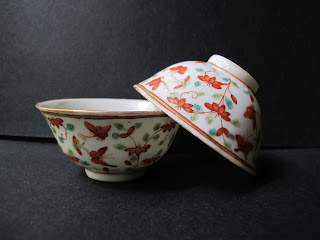




















Alan Watkins wrote a very thought provoking tea article, on 29 Aug 2011 in the Daily Mail. Text and picture from the following website: (http://www.dailymail.co.uk/news/article-2030922/Earl-Grey-drinkers-dismiss-new-recipe-affront-tea.html)
We're pining for our old Twinings: Furious Earl Grey drinkers dismiss new recipe as 'an affront to tea
It is the company credited with transforming tea into the nation’s favourite tipple more than 300 years ago.
But now Twinings has provoked the ultimate storm in a teacup by tampering with one of its best-known and most cherished blends.
Fans of the company’s Earl Grey tea are furious that the firm has altered the traditional flavouring and relaunched it as The Earl Grey.
Trouble brewing: The original Earl Grey which customers say they want back
They say the new product tastes like ‘lemon cleaning product’ and describe it as ‘dishwater’ served up in a cup.
Dozens of angry tea drinkers have posted complaints about the new flavour on the company’s website since the new brand was launched in April.
One wrote: ‘I cannot describe how awful this new tea tastes. The old award-winning tea was in a completely different league to this foul-tasting dishwater.’
Others have simply described the new product as ‘horrid’, ‘vile’ and ‘an affront to tea’.
One wrote: ‘I agree with the other posts here that the new Earl Grey is an awful disappointment!
‘Bring back the old recipe that was refreshing and flavoursome.’
Some tea drinkers are so dismayed by the new blend they have added their names to a Facebook campaign called ‘Bring Back the Original Twinings Earl Grey Tea’.
Several have enquired on the campaign page where you can find old stock of the original Twinings Earl Grey on supermarket shelves.
Twinings, which was founded by Thomas Twining after he opened a tea room on the Strand in London in 1706, is generally acknowledged to have been the first company to sell the first brand of Earl Grey tea.
It launched the blend in 1831, naming it after the Prime Minister of the day, Charles Grey. The distinctive taste is created by infusing black tea with the oil of the bergamot orange from South-East Asia.
Though Twinings was first to market Earl Grey, its origins have been disputed for nearly 200 years.
According to one story, the blend was first created by accident when a gift of tea and bergamot oranges was made to Earl Grey from diplomats in China and the tea absorbed the flavour of the oranges during its journey by sea from Asia.
Others say Earl Grey was gifted the recipe for the blend by a visiting Chinese dignitary.
Twinings’ new The Earl Grey contains extra bergamot and citrus.
According to the company’s website the product has been ‘refreshed’ with an ‘additional hint of bergamot’.
Alex Probyn, a master tea blender who runs the firm Blends for Friends, said: ‘You are talking about changing a product that people have been drinking for decades. A reaction is inevitable.’
A spokesman for Twinings insisted it had carried out extensive market research before implementing the changes.
He said: ‘As with all changes to blends, our new Earl Grey has undergone rigorous consumer tasting, receiving strong preference feedback over the previous blend.’